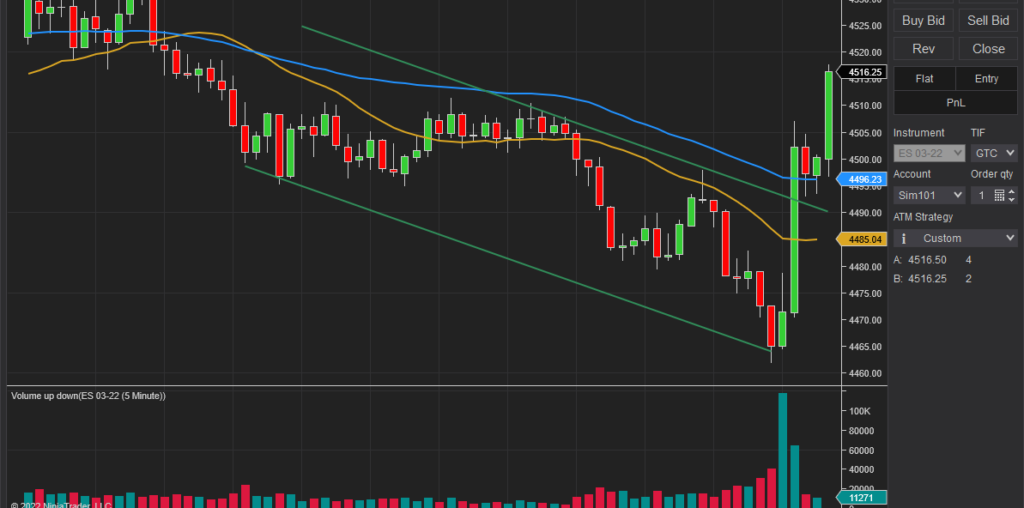Investing in the stock market can be an intimidating venture, particularly for beginners. The inherent risks of financial loss often deter individuals from diving into the world of trading. However, the advent of paper trading has revolutionized how newcomers and even seasoned traders can experiment with different strategies without any financial repercussion. This method is not just popular but also a practical stepping stone into the complex world of the stock market.
Understanding Paper Trading
Paper trading is a simulated trading process where individuals can trade stocks, options, and other financial instruments without using real money. This virtual trading environment is akin to a flight simulator for pilots; it provides a risk-free atmosphere to practice and hone skills. The trades made in paper trading do not impact actual capital, thereby removing any emotional pressure associated with real financial risks.
In paper trading, participants use a simulated portfolio with fictitious funds to place trades. The market conditions, including real-time data and pricing fluctuations, mirror actual market activity, fostering a realistic trading experience. This feature is invaluable for anyone looking to understand market dynamics, test different strategies, and build confidence.
How Does Paper Trading Work?
Many brokerage firms and online trading platforms offer paper trading accounts. Once an account is set up, users are typically allocated a certain amount of virtual currency to begin trading. The interface mimics that of a real trading account, providing tools and features such as live market feeds, technical analysis charts, and news updates.
As participants execute trades, they can track performance metrics like profit and loss, risk management statistics, and portfolio value changes in real-time. This simulation enables traders to assess the effectiveness of their strategies, refine techniques, and make data-driven decisions without any real-world financial consequences.
How Do I Open a Demat Account?
While paper trading is an excellent tool for learning, progressing to real trading requires setting up an actual trading account. The first step in this journey is to open a Demat account. A Demat account, short for dematerialized account, holds your shares and securities in an electronic format, facilitating easy trade transactions and transfer.
To open a Demat account in India, follow these steps:
- Choose a Depository Participant (DP): Select a broker or depository participant registered with either NSDL or CDSL.
- Submit Necessary Documents: You’ll need to submit identification documents such as PAN card, Aadhar card, proof of address, and passport-size photographs.
- Fill Out the Application Form: The DP will provide an account opening form that needs to be duly filled and signed.
- Complete In-Person Verification (IPV): This process involves verification of the documents submitted and can be done physically at the DP’s office or through online channels.
- Receive Demat Account Number: Once the application is processed, you will receive a unique Demat account number, enabling you to commence trading.
Benefits of Paper Trading
- Risk-Free Environment: The most significant advantage of paper trading is its risk-free nature. Without the fear of monetary losses, traders can focus on learning and improving their strategies.
- Real-Time Learning: By mirroring actual market conditions, paper trading allows users to understand how different factors affect stock prices, helping to develop intuitiveness about market movements.
- Strategy Development: Traders can experiment with various techniques and strategies to observe what works best under different market scenarios. This practice aids in formulating robust trading plans.
- Performance Analysis: Access to detailed reports and analytics provides insights into trading habits and results, fostering an informed decision-making process.
Example of Paper Trading Simulation in INR
Suppose you have a virtual fund of INR 1,00,000 for paper trading. You decide to purchase shares of Company XYZ trading at INR 500 per share. You buy 100 shares, totaling an investment of INR 50,000. Later, the share price increases to INR 550.
Your paper profit calculation would be as follows:
– Purchase cost: 100 shares x INR 500 = INR 50,000
– Current value: 100 shares x INR 550 = INR 55,000
– Profit/Loss: INR 55,000 – INR 50,000 = INR 5,000
This hypothetical transaction illustrates the profitability of a strategy without risking real capital.
Challenges in Paper Trading
- Psychological Factors: Real trading involves emotions like fear and greed, which are absent in paper trading. This discrepancy can lead to over-optimistic strategies in simulation, which might not work under actual emotional pressures.
- Market Impact: In the real world, large trades can impact stock prices due to market dynamics, a factor not accounted for in most paper trading platforms.
- Diverse Market Conditions: Paper trading typically does not account for slippage, order delays, or liquidity issues, which can occur in real trading environments.
Conclusion
Paper trading emerges as a popular learning tool for understanding stock market strategies without financial consequences. With the Bajaj Finserv App, users can explore market trends and refine their trading skills in a risk-free environment. It bridges the gap between theoretical knowledge and real-world execution, offering an effective platform for novices and experts alike. However, prospective traders should transition to live trading with caution, acknowledging both the lessons learned from paper trading and the extensive research required to mitigate real-world trading risks.
Disclaimer
Trading in the stock market involves substantial risk and can lead to financial loss. It is crucial for investors to conduct thorough research, evaluate individual risk tolerance, and consider financial objectives before engaging in trading activities. While paper trading provides a risk-free simulation, actual trading requires careful strategy planning and an understanding of market conditions and potential disruptions.



